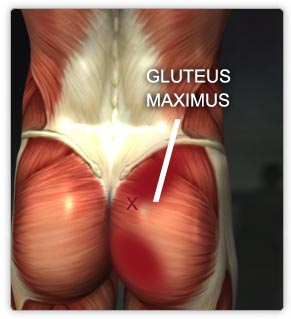One of the most common complaints that most people have about their bodies, especially as they get older, is the issue of flexibility. Flexibility is a term that we use when referring to freedom of movement, and when one is flexible, he can move in a variety of ways without restriction.
The definition that we give a movement or muscle that is not flexible, is “tight”. We call these muscles “tight” because that’s how they feel. The obvious solution when something is tight, is to stretch it in the hopes that hopefully the muscle will lengthen and we will regain flexibility.
The obvious solution when something is tight, is to stretch it in the hopes that hopefully the muscle will lengthen and we will regain flexibility.
The big problem with this rationale is that muscles don’t really lengthen and tighten. A muscle really only has one function. Contraction. Therefore, it’s very possible to have a long muscle that feels tight because it is over-contracted. In this case, stretching may not only be useless, it may actually make the muscle contract even more, leaving you “tighter”.
It’s this hyper-contraction of a particular muscle or muscle groups that restricts movement. It’s the chronic contraction that makes it feel tight and that’s why we feel we must stretch it to make the muscle “not tight”. But as you may have noticed that doesn’t really work, and to understand what does work you need first to understand the function of a muscle.
As I have pointed out muscles have one basic function – contraction. A muscle can have varying degrees of contraction which produces some type of movement. This is how we move our body. A series of muscles contract in a specific way to produce a desired movement.
The real players in movement however, are the joints. Joints run the show because they are what dictate our range of movement. When you move, you always do so within the range of your joints. The muscles job is to contract so that the joint can carry out the action that it wants to do.
Because of the importance of joints, they have top priority in the nervous system. The brain receives feedback about the bodies position in space primarily through the position and angles of the joints. The brain then uses muscles to manipulate joints in some way.
When you have an over-contracted muscle, it is under the control of your brain. For some reason, your brain thinks that it is very important that the muscle be contracted in the fashion that it is. More often than not, it has something to do with the joints.
Joint integrity is of top priority for the brain. If you dislocate a joint, your movement will be tremendously compromised. If you were living in nature this would almost certainly eliminate your chances of survival. You would find it very difficult to hunt for food and you would make easy prey for any predator.
Because of the importance of joints then, our brains will over-compensate to ensure that they are safe. The easiest way to do this is to “tighten” everything up, meaning to contract the muscles around the joint, making it more compact and less likely to dislocate.
This is what happens when we have a tight muscle. Our brain tightens the muscle because for some reason it thinks that the joint that the muscle crosses is under threat. According to the brain, this compromise in flexibility is more than worth is because of the safety of joint integrity.
In order to get your brain to stop contracting the muscle you must re-assure it that the joint is safe. There are two main reasons why your brain thinks that the joint is not safe:
1. There is a lack of information going from the joint to your brain. When this happens, your brain is not quite sure what is going on with the joint and therefore it over compensates by tightening all the muscles around it. Better safe than sorry!
2. The joint is very weak. For some reason, possibly due to lack of use or injury, the muscles around the joint have become weak and unresponsive. The easiest solution is to tighten all the muscles around the joint, restricting movement and thus reducing the chances for dislocation.
When you have a scenario like this, the over-contracted muscles affect the entire system and your whole body can become rigid and “tight”. The solution is to communicate to your nervous system that your joints are safe and therefore it is safe to relax the muscles around that joint.
Moving each and every one of your joints in all various fashions is how you do this. Moving your joints sends signals to your brain about the condition of the joint. This “waking up” of the joint is the reassurance that your brain needs to relax the muscles around it.
Also, strengthening your joints in all different positions will reinforce their safety. Flexibility has much more to do with how stable a joint is at various positions than how “long” the muscles are around it. Therefore, strength training at joint end range of motion is what will increase ones flexibility.
In the grand scheme of things, being “tight” has nothing to do with your muscles. Your brain is over-contracting certain muscles because it thinks that is the safest option. Stretching the muscle will only make matters worse. Instead, regain the mobility and strength of your joints. That’s where flexibility lies.
Conor Hughes is a performance coach specializing in fitness, wellness, accelerated learning and longevity. Conor has a blog where here explores these areas through the process of neuroplasticity. You can learn more about Conor and his journey into neuroplasticity by visiting his blog What is Neuroplasticity

 RAWFIT est. 1999
RAWFIT est. 1999